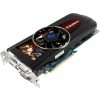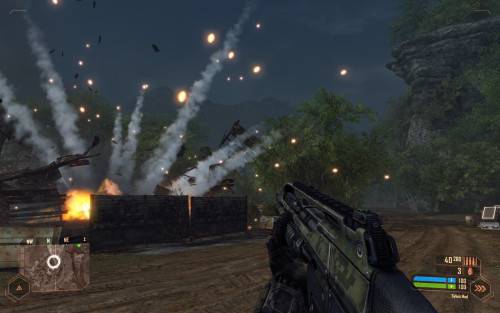- Qualcomm Launches Snapdragon 4 Gen 2 Mobile Platform
- AMD Launches Ryzen PRO 7000 Series Mobile & Desktop Platform
- Intel Launches Sleek Single-Slot Arc Pro A60 Workstation Graphics Card
- NVIDIA Announces Latest Ada Lovelace Additions: GeForce RTX 4060 Ti & RTX 4060
- Maxon Redshift With AMD Radeon GPU Rendering Support Now Available
ATI Radeon HD 5830 – AMD Completes its HD 5000 Line-up

In what might be a record, AMD managed to release both the first and final normal model from its HD 5000-series in a mere five months. The final card is of course the HD 5830, which falls comfortably between the HD 5770 and HD 5850, and has the $240 price tag to prove it. So regardless of your given budget today, AMD has a card for you.
Page 5 – Crysis Warhead
Like Call of Duty, Crysis is another series that doesn’t need much of an introduction. Thanks to the fact that almost any comments section for a PC performance-related article asks, “Can it run Crysis?”, even those who don’t play computer games no doubt know what Crysis is. When Crytek first released Far Cry, it delivered an incredible game engine with huge capabilities, and Crysis simply took things to the next level.
Although the sequel, Warhead, has been available for just about a year, it still manages to push the highest-end systems to their breaking-point. It wasn’t until this past January that we finally found a graphics solution to handle the game at 2560×1600 at its Enthusiast level, but even that was without AA! Something tells me Crysis will be de facto for GPU benchmarking for the next while.
Manual Run-through: Whenever we have a new game in-hand for benchmarking, we make every attempt to explore each level of the game to find out which is the most brutal towards our hardware. Ironically, after spending hours exploring this game’s levels, we found the first level in the game, “Ambush”, to be the hardest on the GPU, so we stuck with it for our testing. Our run starts from the beginning of the level and stops shortly after we reach the first bridge.



We’ve about tied things back up here, with the HD 5830 just barely surpassing the performance of the GTX 260.
|
Graphics Card
|
Best Playable
|
Min FPS
|
Avg. FPS
|
|
NVIDIA GTX 295 1792MB (Reference)
|
2560×1600 – Gamer, 0xAA
|
19
|
40.381
|
|
ATI HD 5870 1GB (Reference)
|
2560×1600 – Gamer, 0xAA
|
20
|
32.955
|
|
ATI HD 5850 1GB (ASUS)
|
2560×1600 – Mainstream, 0xAA
|
28
|
52.105
|
|
NVIDIA GTX 285 1GB (EVGA)
|
2560×1600 – Mainstream, 0xAA
|
27
|
50.073
|
|
NVIDIA GTX 275 896MB (Reference)
|
2560×1600 – Mainstream, 0xAA
|
24
|
47.758
|
|
ATI HD 5830 1GB (Reference)
|
2560×1600 – Mainstream, 0xAA
|
23
|
41.621
|
|
NVIDIA GTX 260 896MB (XFX)
|
2560×1600 – Mainstream, 0xAA
|
21
|
40.501
|
|
ATI HD 5770 1GB (Reference)
|
2560×1600 – Mainstream, 0xAA
|
20
|
35.256
|
|
NVIDIA GTX 250 1GB (EVGA)
|
2560×1600 – Mainstream, 0xAA
|
18
|
34.475
|
|
ATI HD 5750 1GB (Sapphire)
|
1920×1080 – Mainstream, 0xAA
|
21
|
47.545
|
|
ATI HD 5670 512MB (Reference)
|
1920×1080 – Mainstream, 0xAA
|
20
|
35.103
|
|
NVIDIA GT 240 512MB (ASUS)
|
1920×1080 – Mainstream Detail, 0xAA
|
19
|
33.623
|
|
ATI HD 5570 1GB (Sapphire)
|
1920×1080 – Mainstream Detail, 0xAA
|
17
|
29.732
|
Like pretty much every other card we have, for Crysis Warhead to be completely playable, we must down our graphical settings to Mainstream. Fortunately, the game still looks great on that setting, and crisp at the same time with such a high resolution.
Support our efforts! With ad revenue at an all-time low for written websites, we're relying more than ever on reader support to help us continue putting so much effort into this type of content. You can support us by becoming a Patron, or by using our Amazon shopping affiliate links listed through our articles. Thanks for your support!






